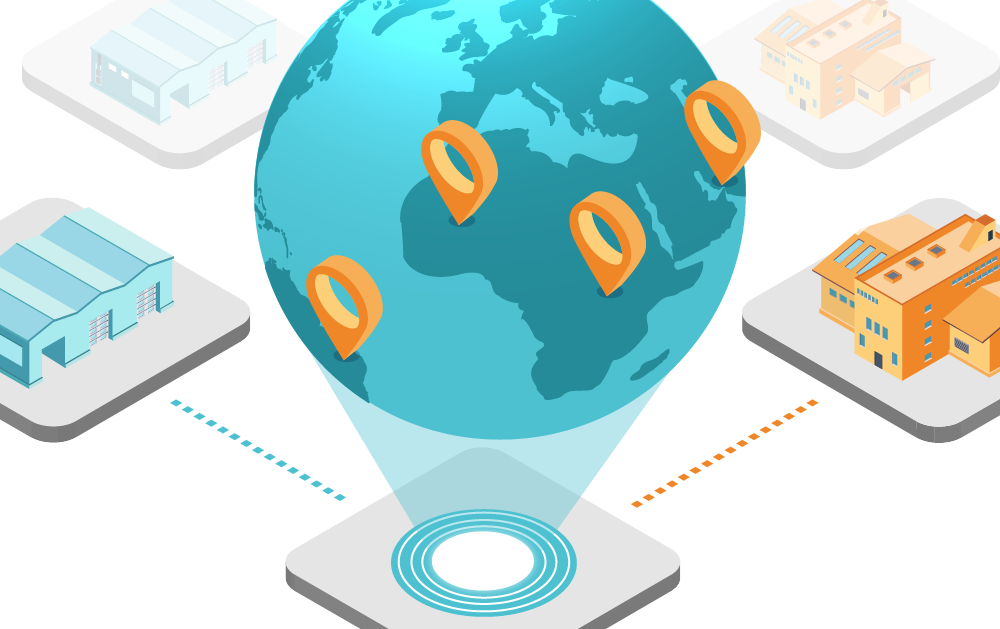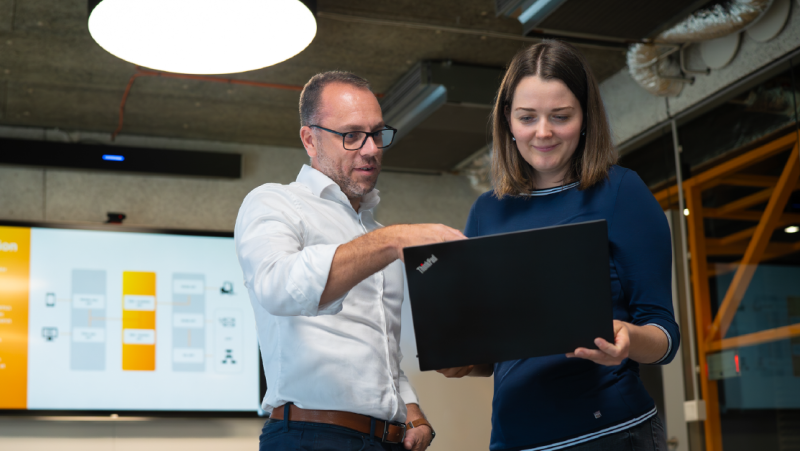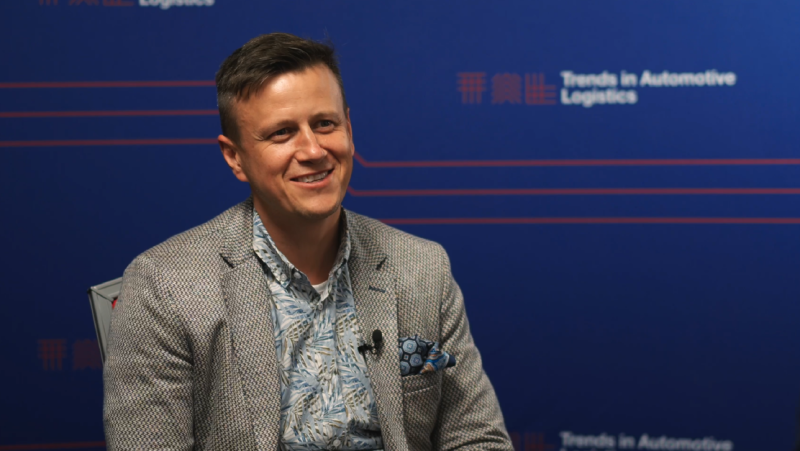Automotive for a New Age: Localised Manufacturing and Supply Chains Alongside New Business Models
- Automotive
- Article
For over a year now, the global economy has seen a trial by fire, and it is struggling with the impacts of anti-epidemic measures. In automotive, the pandemic has mercilessly revealed the vulnerability of global manufacturing and supply structures, and meanwhile this sector is seeing the greatest change in a century, with combustion engines gradually giving way to electric.
The entire field is now faced with not only a drop in consumer demand – which, outside of China, is only returning very slowly – but countless other changes as well. Among them are factory closures, irregularity of sub-deliveries, a lack of the chips8 needed to produce individual models, growing logistics costs2 and the planned imposition of a carbon tax9 on imports into the EU from “non-green” countries. 2020 and 2021 have represented a shock for previously very functional JIT-based sub-delivery modes. The situation has thus highlighted a large question mark hanging over the resilience of the entire system which took several decades to develop.
The “new normal” is to be mobility as a service – and moreover one provided using electric (and eventually self-driving) vehicles.
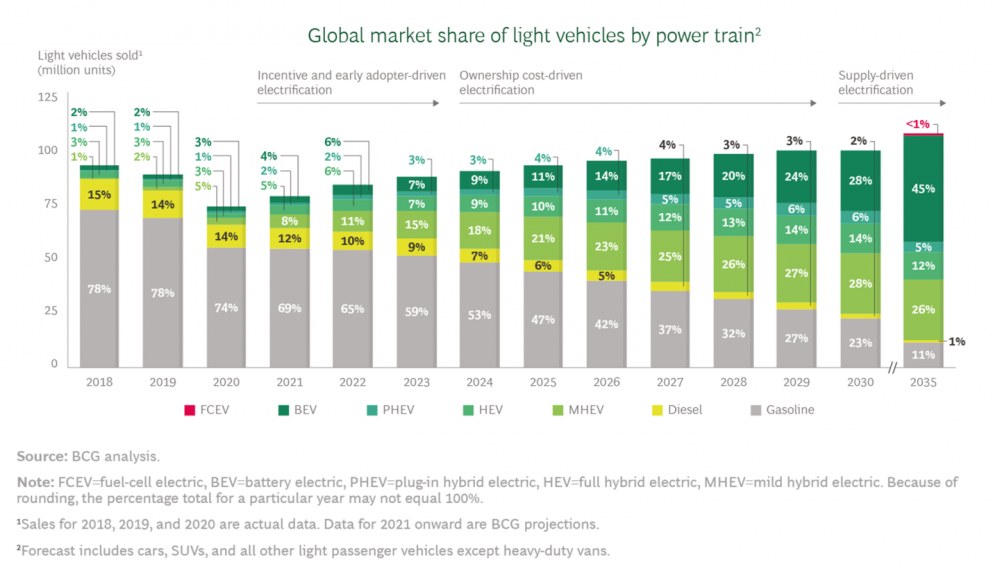
Image source: bcg.com
Additionally, all these circumstances are significantly accelerating changes in car usage patterns, where the model to date has been privately owned cars with combustion engines. The “new normal” is to be mobility as a service3 – and moreover one provided using electric4 (and eventually self-driving) vehicles. OEM manufacturers and their suppliers and dealers, as well as service providers in automotive, must thus prepare for an entirely new situation – one that was still nearly unthinkable in early 2020. All the players thus stand before a fundamental challenge in the form of a radical change to their business models.
From GLOBALisation to GLOCALisation
The experts from the Roland Berger consulting agency believe that automotive manufacturers must rethink their global structures. Which way will the industry go? Globalisation in its current form is to become a thing of the past, replaced by “glocalisation.” What does that mean in practice?
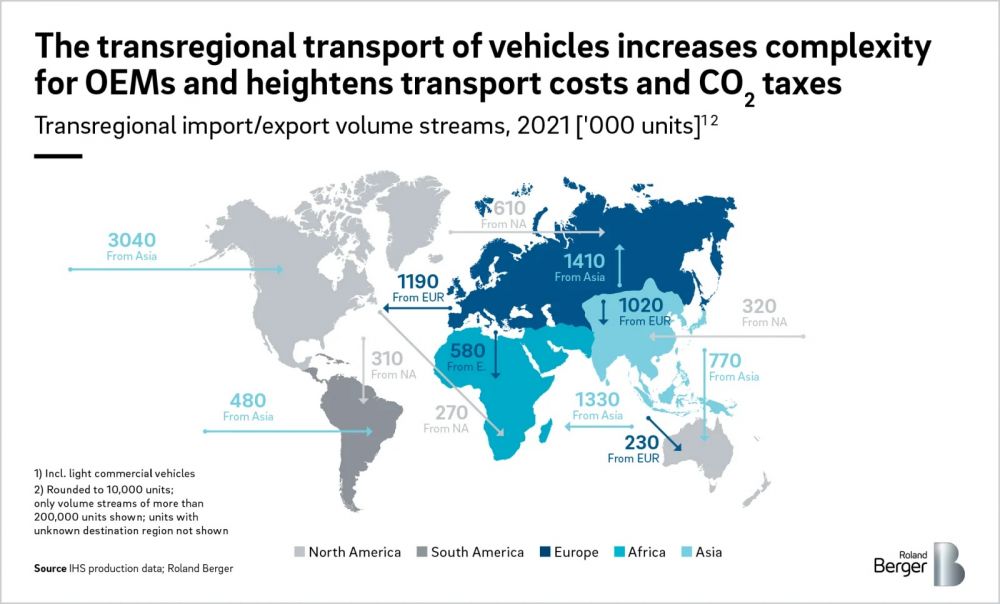
Image source: rolandberger.com
Global manufacturer and supplier chains should gradually go more local, and auto manufacturing, including subcontracting, should occur much closer to the end consumer. Just-in-time philosophies wherein stocks are minimal and some components traverse multiple continents should be replaced by more robust strategies10 with local warehousing and larger strategic reserves for key components. That will enable a more stable flow for both sub-deliveries and final products, increasing resistance to future shocks in the form of trade wars, rising transportation costs and shortages of strategic components. Additionally, the intercontinental transport of goods is expected to be burdened with a special tax on imports from non-green countries (a tax on environmentally damaging manufacturing).
The experts also predict that the pressure to increase manufacturing efficiency and reduce costs will force automakers to reduce vehicle complexity and take steps towards greater standardisation of their models at the expense of customer-specific variants.
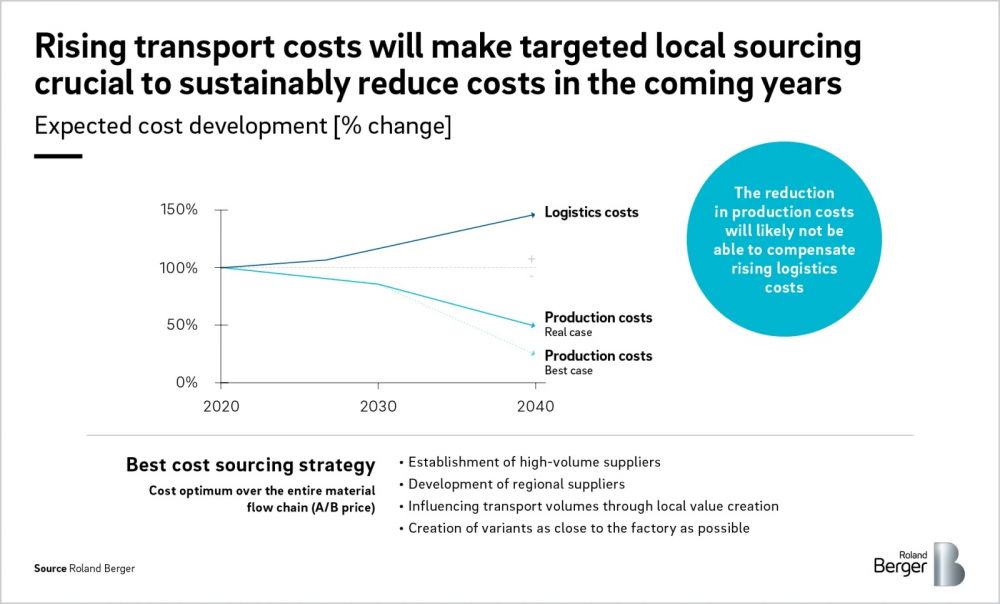
Image source: rolandberger.com
Vertical Supply Chain Consolidation
According to a Deloitte study5, OEMs and their Tier-1 suppliers are considering further vertical consolidation of the entire supply chain in specific territories, which should help to mitigate inter-regional logistics risks while sustainably reducing costs.
Meanwhile, vertical consolidation is also being viewed as a tool for stabilising falling profits in expectation of lower sales volumes in the coming years. Companies will try to derive more revenue from each vehicle sold by selling additional (digital) mobility-related services. This thought is confirmed by, for example, the CEO of Continental, who has stated: “The question is not the number of vehicles. The question is how much value can the automotive industry bring to the consumer?”1 One can see a similar direction in the new strategy for automaker Renault,6 aptly summarized as “From chasing volume to creating value.”
Ideally, you want your battery plant very close to your manufacturing plant, because of the weight.
Andy Palmer, Aston Martin’s former chief executive
When automakers are deciding where they will be producing their electric cars in the future, battery-gigafactory locations will play a role as well. Electric cars should be produced in the vicinity of these factories. A recent article in the Financial Times7 has laid out the matter clearly: “While carmakers are used to shipping parts for traditional cars across the world, the emergence of battery vehicles bolsters the argument for localised production. ‘Ideally you want your battery plant very close to your manufacturing plant, because of the weight,’ says Andy Palmer, Aston Martin’s former chief executive. [...] [He] points out all manufacturers will be seeking this decade to set up plants and supply chains for electric cars.” And now the Czech Republic is striving for a gigafactory as well.11
A Change in Production Concept
Automakers must also respond to the new state of affairs with changed production thinking. For over a century, cars have been manufactured at large factories on assembly lines and then distributed to their individual markets. But in light of the necessity of more flexible manufacturing networks that can react to demand fluctuations, there is now a need to implement new manufacturing concepts. New players in the field of electric cars have already begun to develop disruptive models enabling locally based small-run production. This could also act as a wake-up call for established automakers and place pressure on their thinking.
Sources in English:
1. Continental rules out deeper job cuts over electric car shake-up. Financial Times [online].
2. Higher Shipping Costs Are Here to Stay, Sparking Price Increases. Bloomberg [online].
3. What is Mobility-as-a-Service. ŠKODA Auto DigiLab [online].
4. How global electric car sales defied Covid-19 in 2020. IEA [online].
5. Value recovery in the automotive industry: Maximising value from non-core assets. Delloite [online].
6. RENAULUTION: A NEW STRATEGY FOR GROUPE RENAULT. Groupe Renault [online].
7. UK carmakers after Brexit: a race to attract battery production. Financial Times [online].
Sources in Czech:
8. Nedostatek čipů zastavuje výrobu, automobilky přijdou o miliardy. IDnes.cz [online].
9. Brusel chystá daň z uhlíku. Zdražila by dovozy zboží z nezelených zemí. IDnes.cz [online].
10. Výrobce čipů Infineon automobilkám radí, ať změní dodavatelský řetězec. Investiční web [online].
11. Havlíček (MPO): ČEZ jedná s Volkswagenem o stavbě gigatovárny na baterie v severních Čechách. SolarniNovinky.cz [online].
Share article
Top stories from logistics, production and IT.
Subscribe to Aimtec Insights
By registering, you agree to the processing of your personal data by Aimtec as described in the Privacy policy.
Get top stories and articles
from Logistics, Production and IT.
Subscribe to Aimtec Insights
By registering, you agree to the processing of your personal data by Aimtec as described in the Privacy policy.

